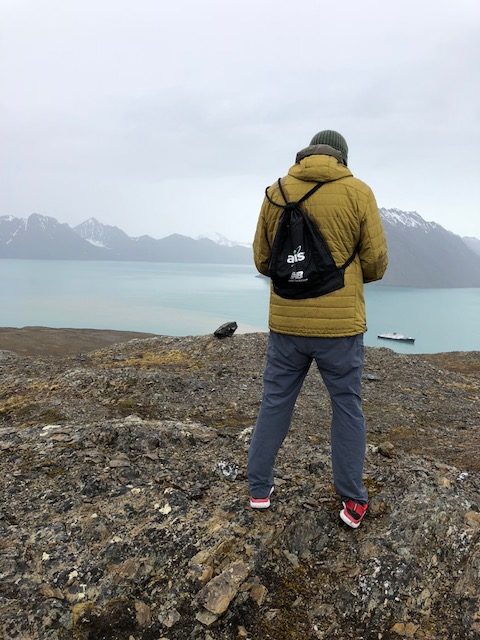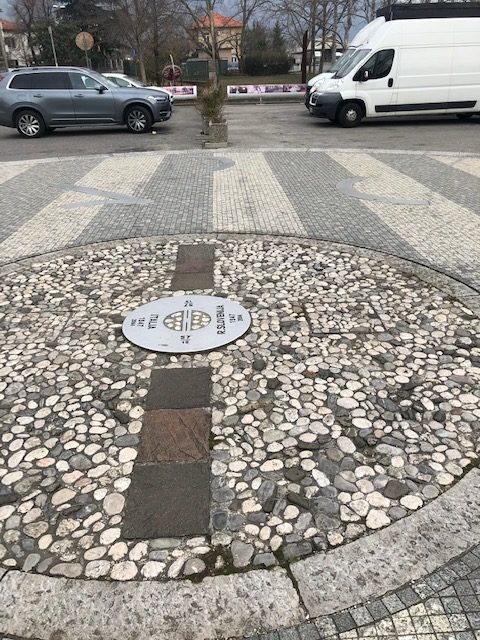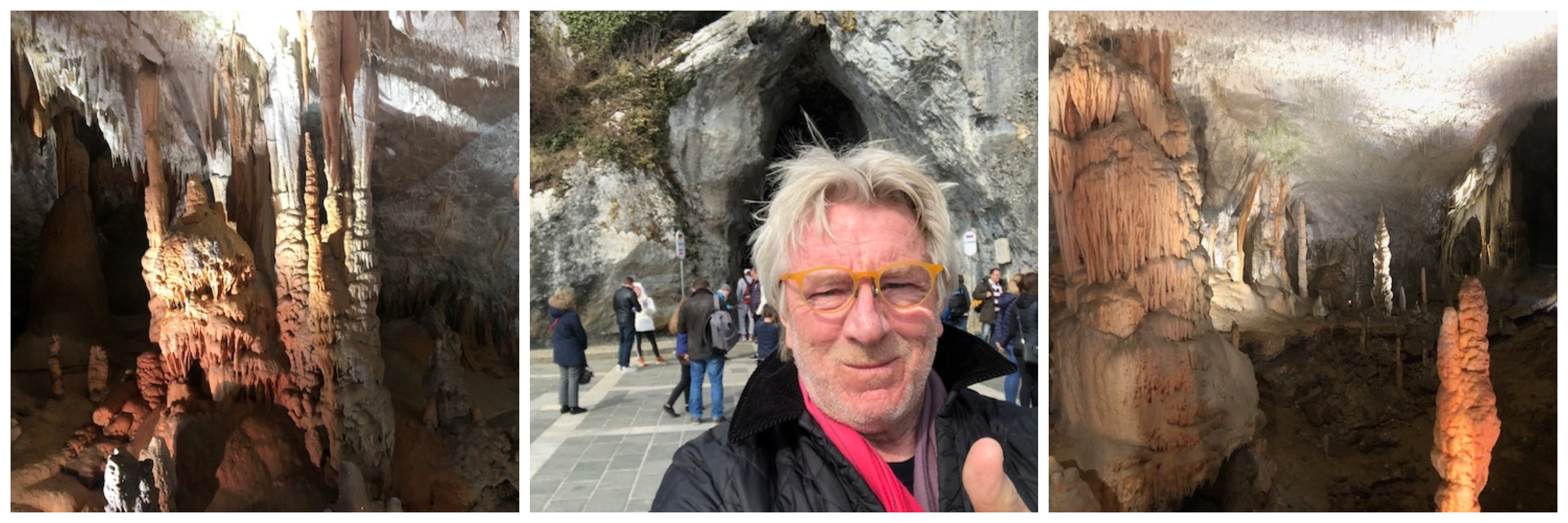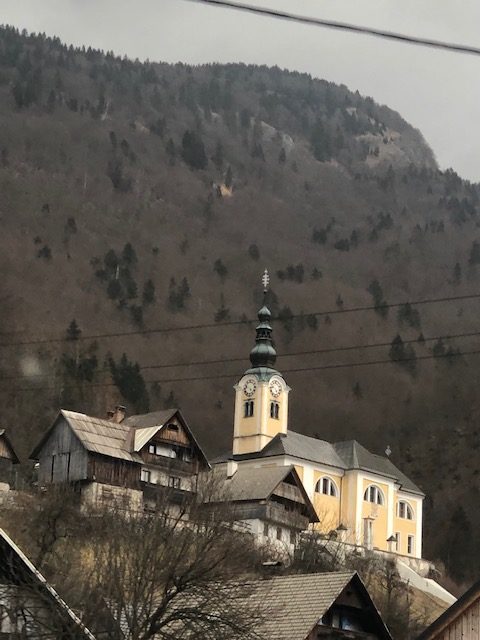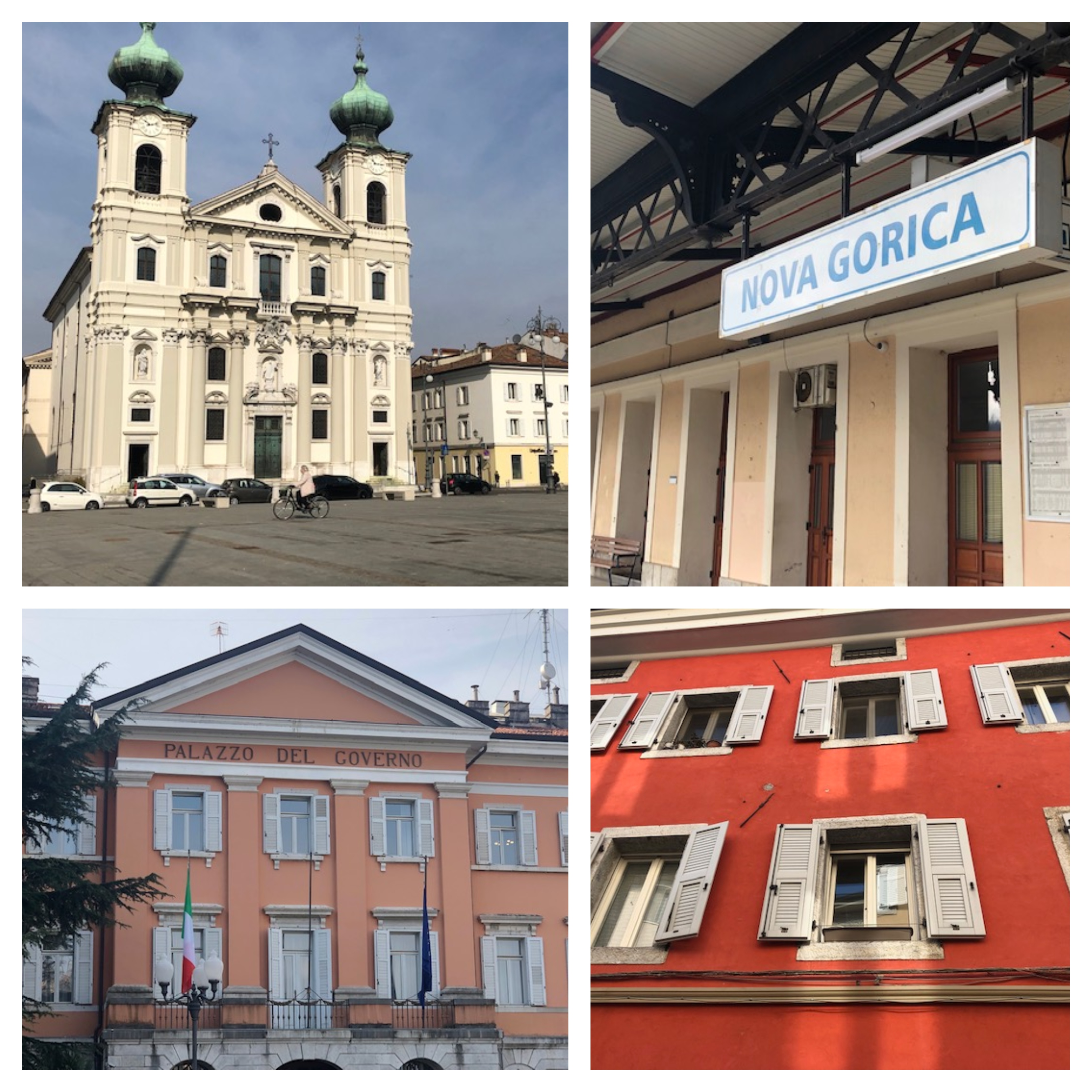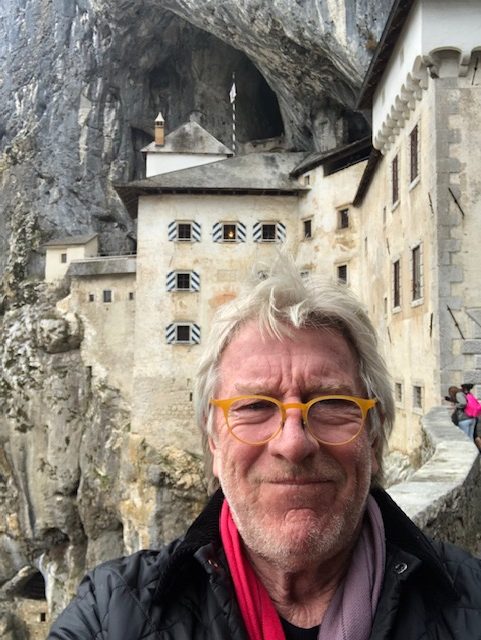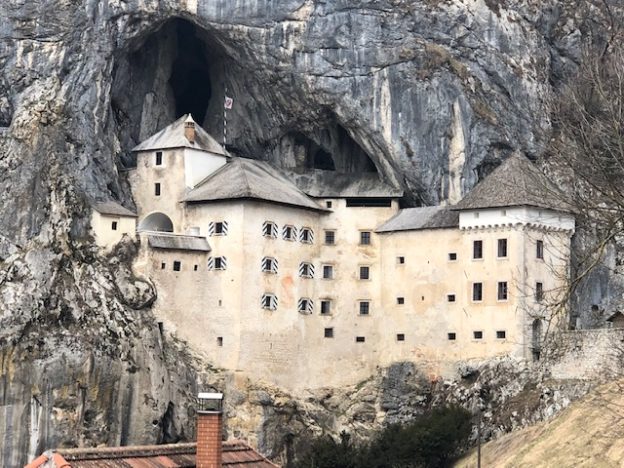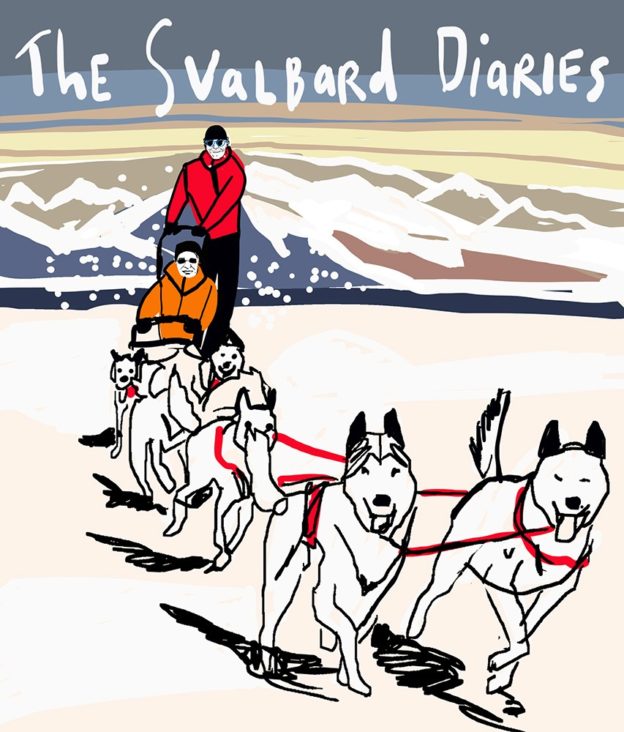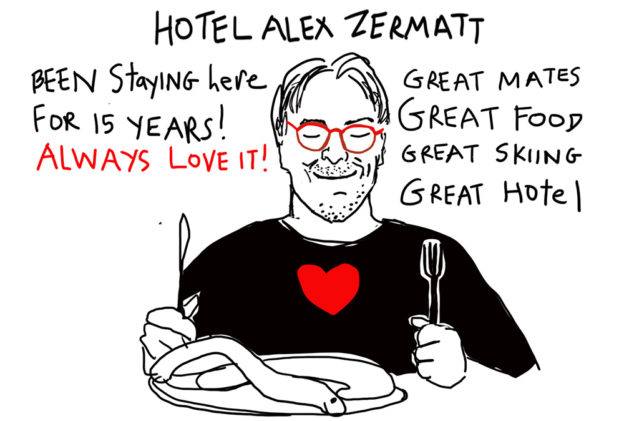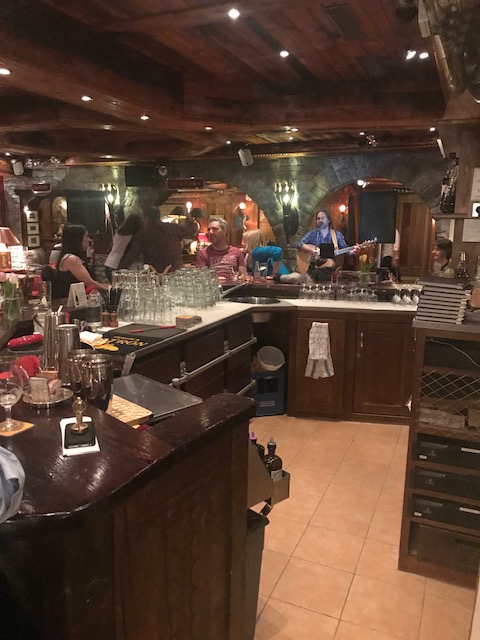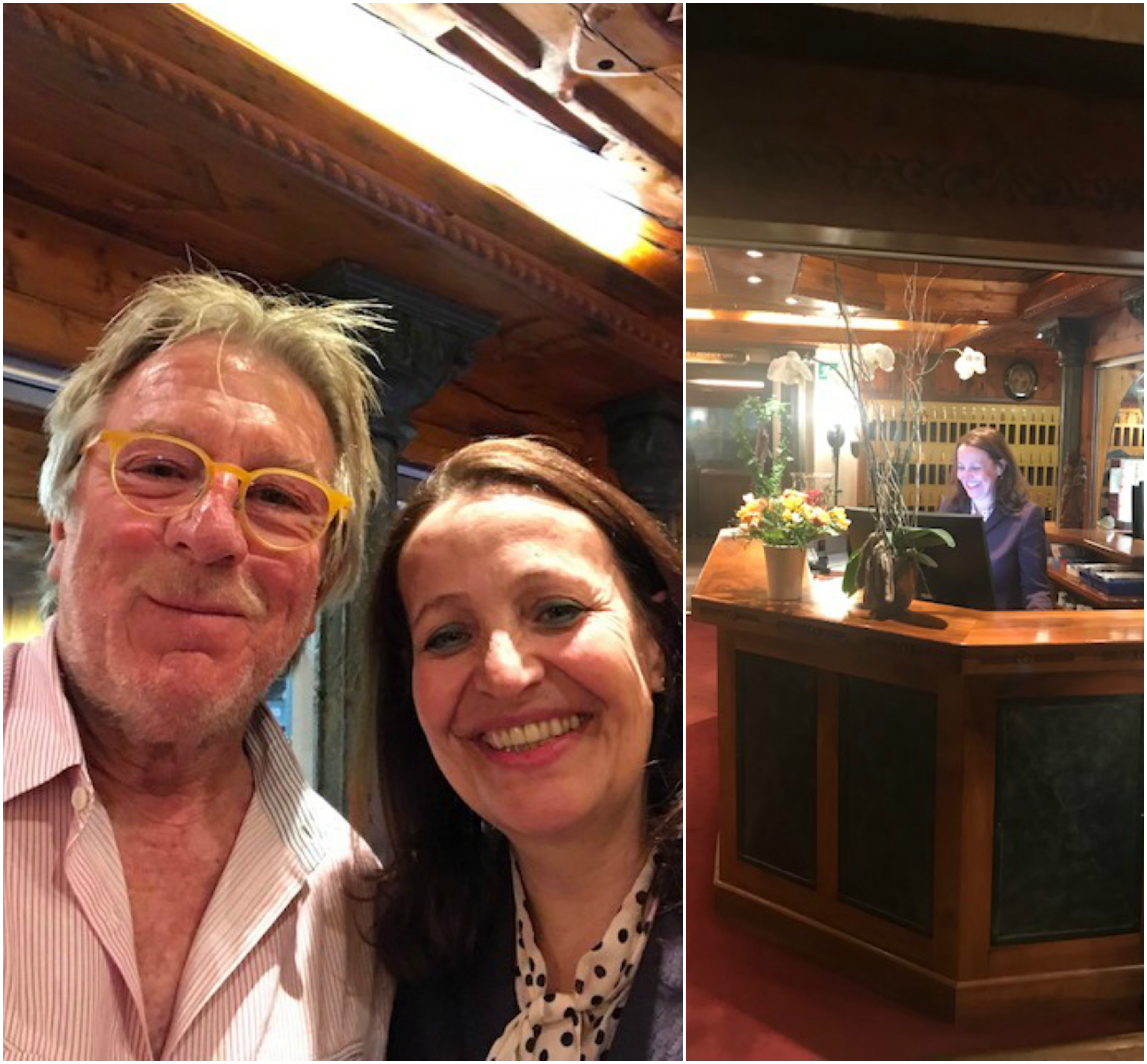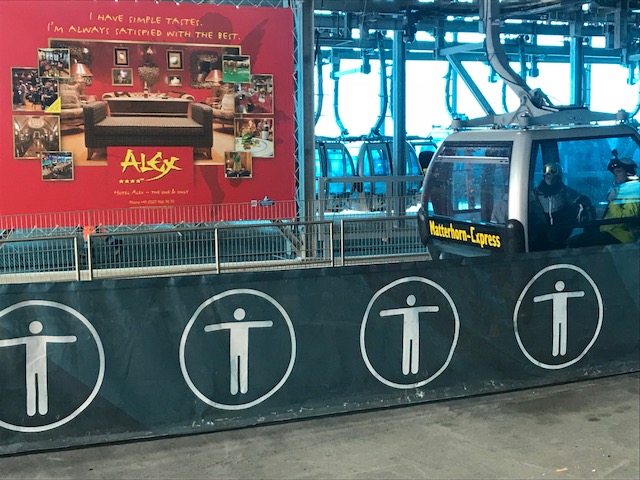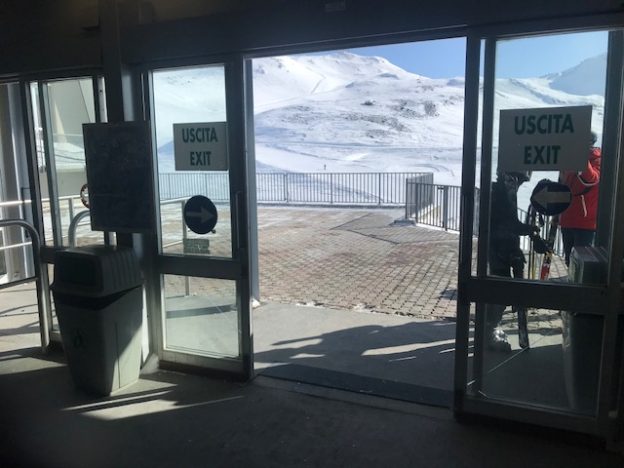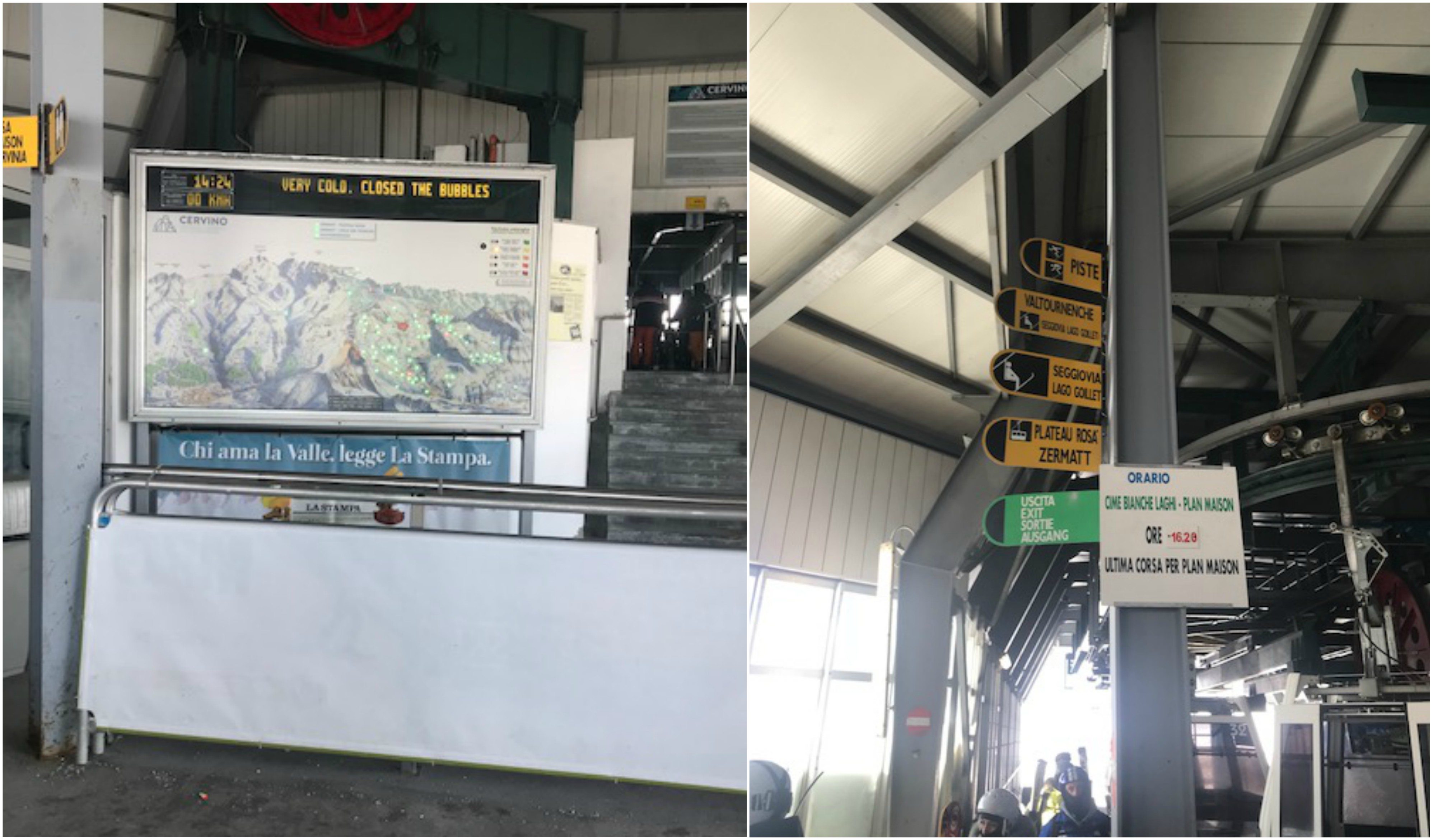An Introduction to Svalbard
There are some key facts to know about the Norwegian archipelago of Svalbard before visiting. The habitable part of Svalbard is called Spitsbergen, so called because of the jagged mountain tops. There are about 2,500 people living there, 4,000 snowmobiles, 3,000 polar bears, 4,000 walruses, 10,000 reindeer, and a healthy and sustainable population of arctic foxes. About 2,000 huskies live here too. It is at 78 degrees latitude – well inside the Arctic Circle.
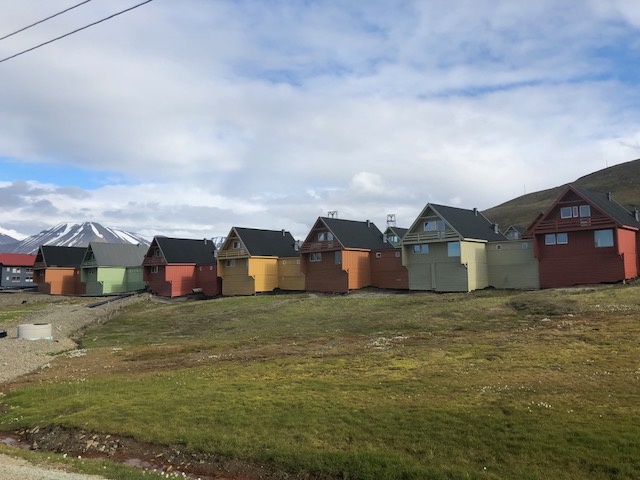
Svalbard’s capital, Longyearbyen, was a famous whaling community and later a mining town. Svalbard is now part of Norway but according to the 1920 Svalbard Treaty, 48 countries have the right to do business here and to work here. There are only 800 beds in hotel rooms throughout the archipelago and 43 kilometers of road. Residents are entitled to 24 beers a month! Now, that’s something that might rule out many, many people.
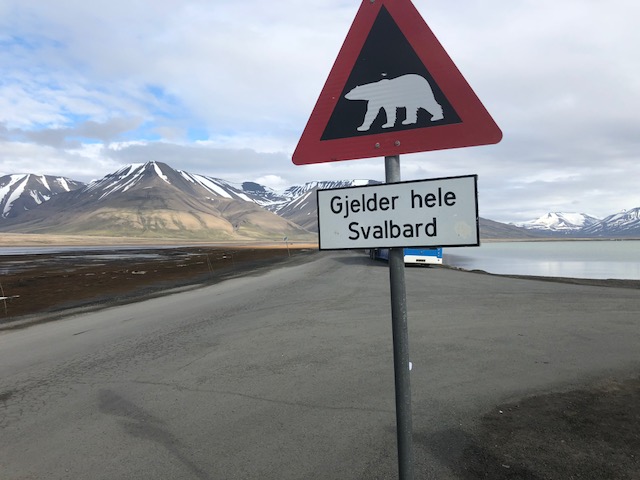
You can die here but not be buried and illness is not recommended for permanent residency. If you are ill, you are shipped back to the mainland. There is no unemployment. You either work or you are shipped off the island! There is no crime on Svalbard either. If you commit a crime, you are sent off the island!
There is a university here and it is one of the most important geological places on earth. Svalbard in winter is one of the most amazing places to see the northern lights. In the summer months the sun never sets from June through the end of September.
Early explorers trying to figure out a way through the north east passage to the riches of the Asian continent were some of the first to discover Svalbard. In the 19th century, adventurers used it as a jumping off ground for expeditions to the North Pole. Today it is one of the northern-most places to visit on Earth and is a haven for some incredible wildlife. Tourism is controlled naturally by the hotel beds and the limited air connections from Oslo. The only danger to the island are the cruise ships!

First Day Adventure
The flight into Svalbard was dramatic as we flew over layers of ice sheets amidst soaring mountains. There was cloud cover and then it broke into a northern sunlight. We then touched down in this strange arctic land that sits at 78 degrees latitude.
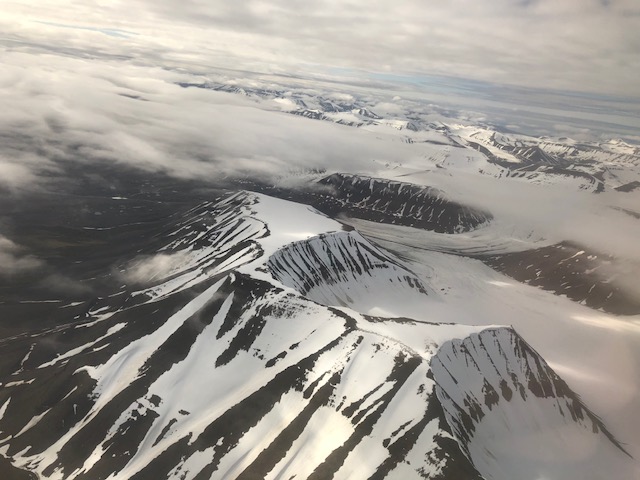
Upon arrival, our tour was conducted by Vigo, a wild looking local who knew the tricks of guiding around this place. There is not much to see in the capital of Longyearbyen, one of the world’s northern-most towns. It’s a pioneer settlement, once a great coal mining town, and now largely an outpost and staging point for adventure tourism and cruises.
What strikes me first is that we are so far north. It feels surprisingly temperate, but it gets cold as the afternoon moves in although the sun never gets too close to the horizon. At around halfway to the horizon, it just stays horizontal and regenerates for another day. Sunglasses are the midnight choice of eyewear here. We drove to see the great satellite dishes that monitor the stars and keep track of the hundreds of satellites that pass across on any arctic day and night. We drove by old coal mines that have long been deserted although one mine still is active with limited production. Coal became the main industry after whaling stocks were depleted. Imagine that job offer?! Miners needed. Miners in Svalbard? No sun for six months then no darkness for six months. Plus, it’s cold and there are polar bears occasionally. Not to mention that the job itself is incredibly dangerous. I think I’ll take a beer – oh, sorry I’ve gone past my allotment!
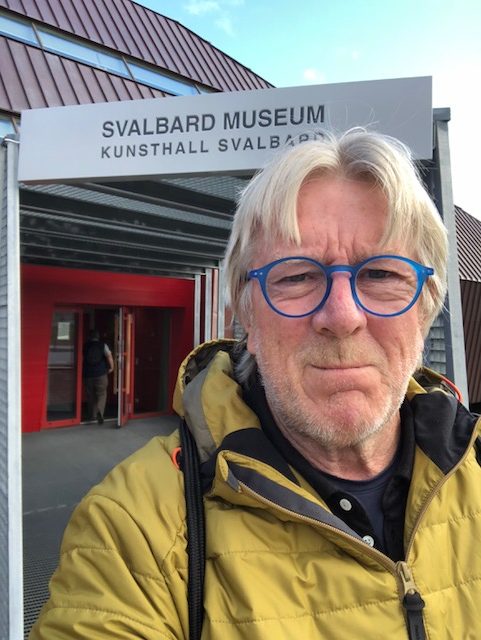
We then met with Anika who explained the island and the possibilities for tourism. We strolled the town and visited the Svalbard Museum which is essential to get the full picture. The museum is full of the history of whaling and hunting and polar bears and coal. It’s low key and worth the visit. There’s a poor stuffed polar bear who couldn’t obviously resist getting too close to someone with a rifle. Alas there are no winners in that game, but he is here in the museum. Immortal and very much the highlight of the museum!
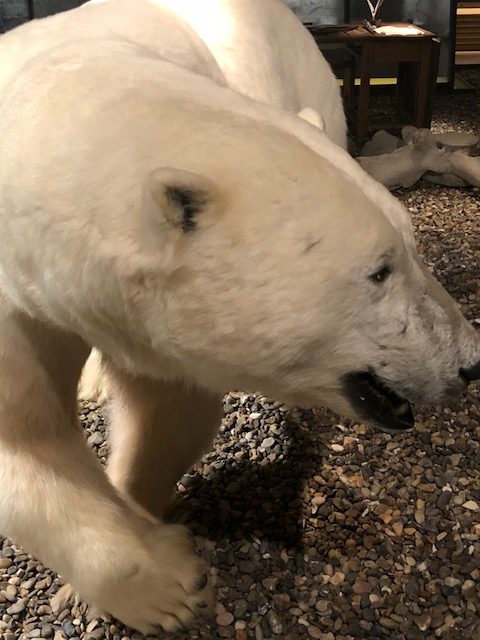
In the afternoon, we organized a dog sledding excursion with nine huskies and a guide. During the summer, instead of using a traditional sled, they use a wheelie sled. What a blast it was. I got to steer it and we had to stop to make sure the huskies stayed hydrated. In the winter they don’t worry about it though.
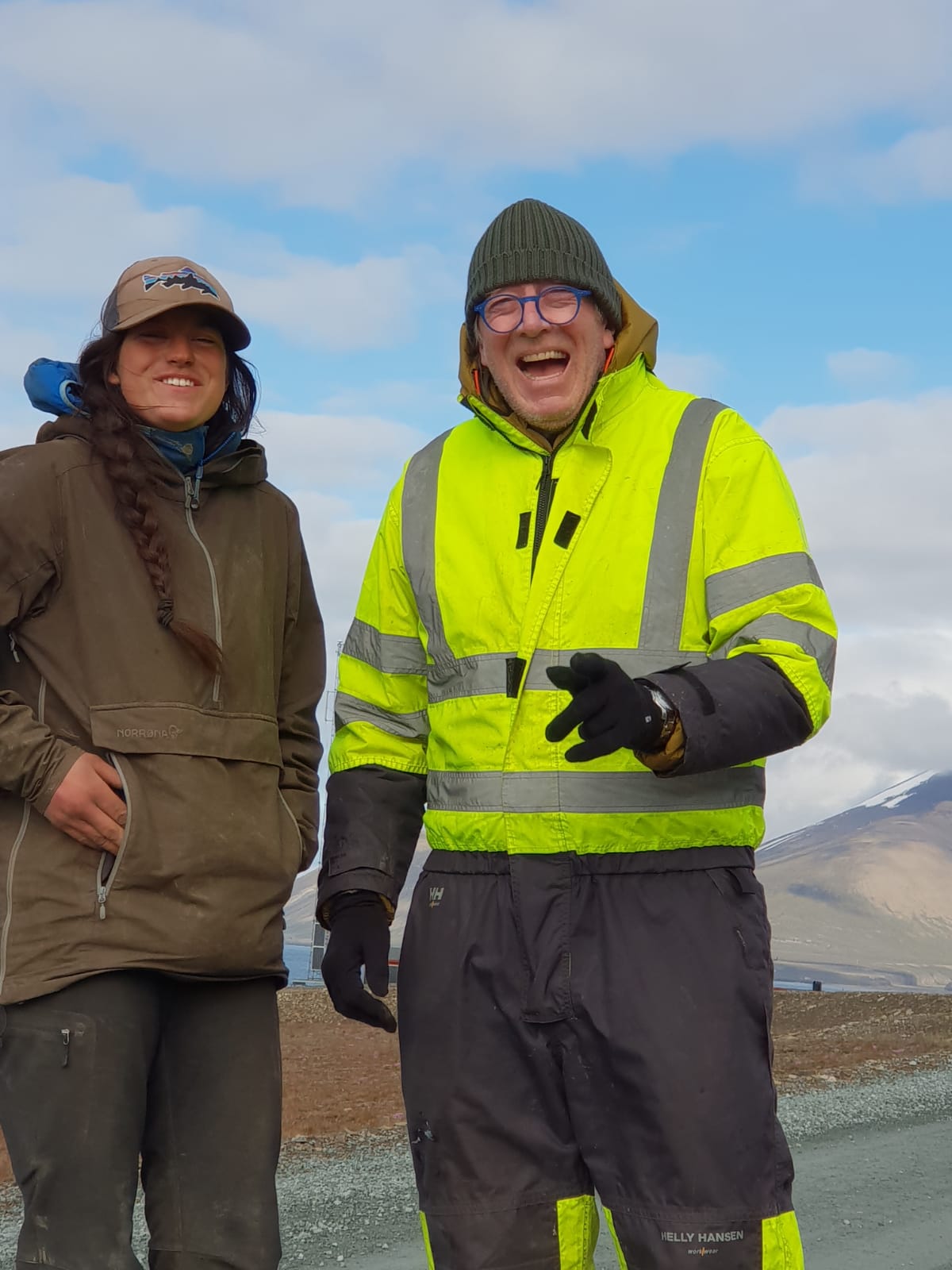
These huskies are amazing. They are strong and not at all intimidating. Just friendly animals. We sledded out to the tip of the island and bumped into some reindeer and some horses. The dogs were cool about it – thank goodness!! The biggest thrill was learning how to rig the sled and how to look after the dogs. At the end of the day, we drove back to “huskyville” to bring the dogs back home. The company keeps about 200 huskies. According to our fab guide, Taya, a Canadian from Alberta, winter is more fun for everyone. The huskies can sleep outdoors even on the coldest arctic night. Sometimes the sleds have 20 huskies pulling riders across the ice and snow. This is their neighborhood. What a thrilling adventure!
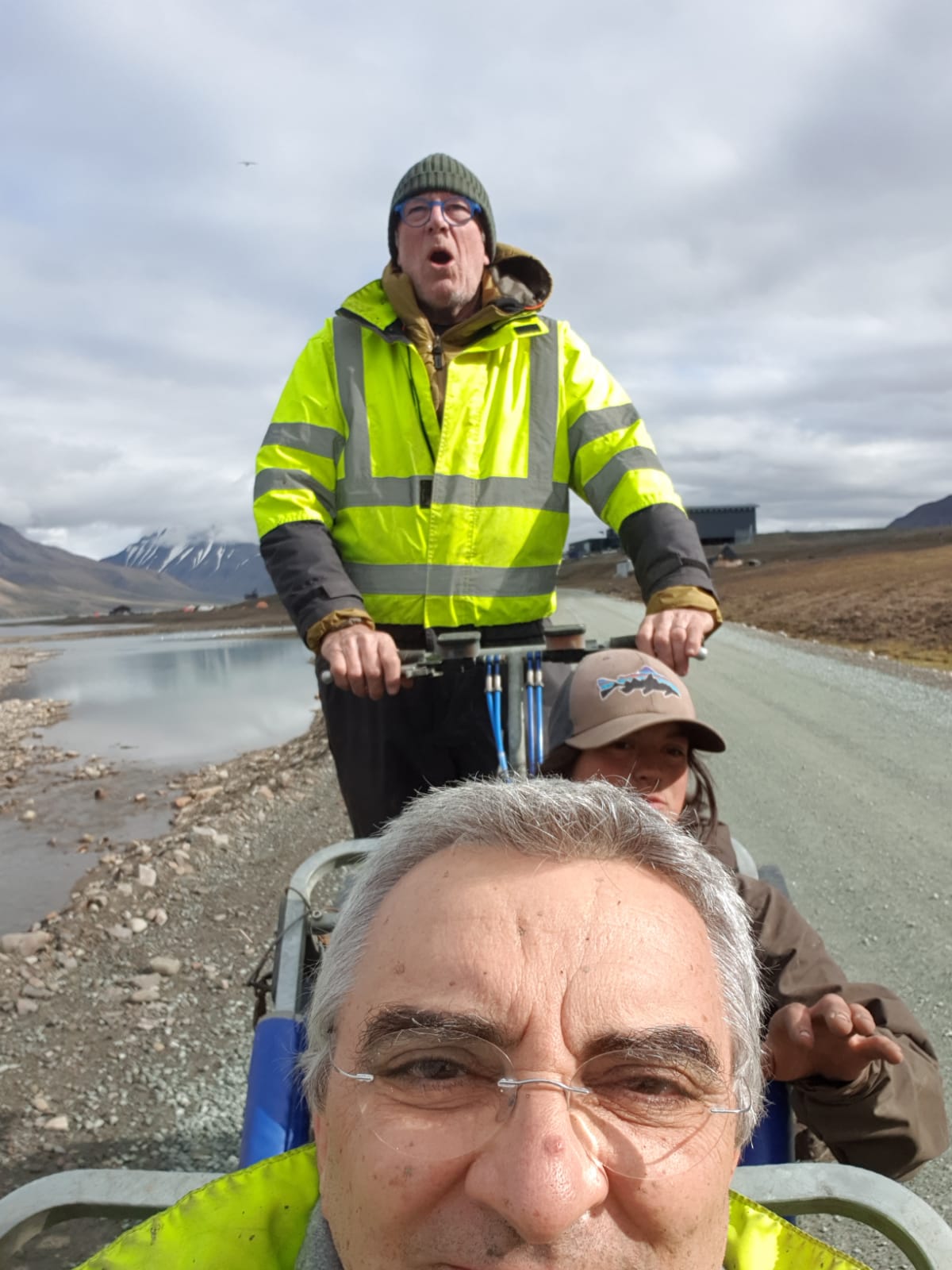
Cruising the Arctic

Today we boarded our small cruise ship of about 100 passengers in total that would take us on a three-day journey around Svalbard. Cabins are basic, fairly tiny and have bunk beds. I had a port hole so some minor luxury! I also had a shower and a toilet. You needed to keep a clean ship inside the cabin. And when the boat turned, it was a rocky ride indeed. No room for the seasick traveler. For the frequent Costa cruise ship type, this would be a stretch. For me it was a minor challenge! The most important decision of the cruise was to choose your table seat and position. You have to do this right away. We grabbed the window berths. That was a big deal. We had the safety briefing then a buffet lunch which was pretty decent before heading out to Barentsburg about four hours from Longyearbyen.
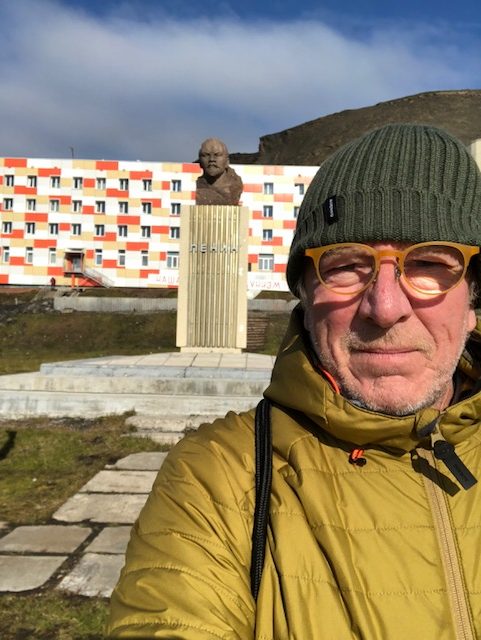
If you had said that we were heading to the USSR today I would not have believed you. But here we were. This was (and still is) a Russian coal mining town. And this really was Russia with a Lenin statue in the middle of the square. It was another world. Pure USSR but no visa hassle!!

Today we couldn’t go down the mine but we got to stroll the town. We had a show provided by the Arctic Singers. It was a little wild but lots of fun and we got to meet the cast members and take pictures afterwards. There was a fabulous pub with local craft beer called 78 Degrees. A Russian wooden church, a souvenir shop and not much else. But, this was Russia! Visiting Barentsburg can be done from Longyearbyen by hydrofoil as a day trip. It takes about an hour to get there. It’s a must do!
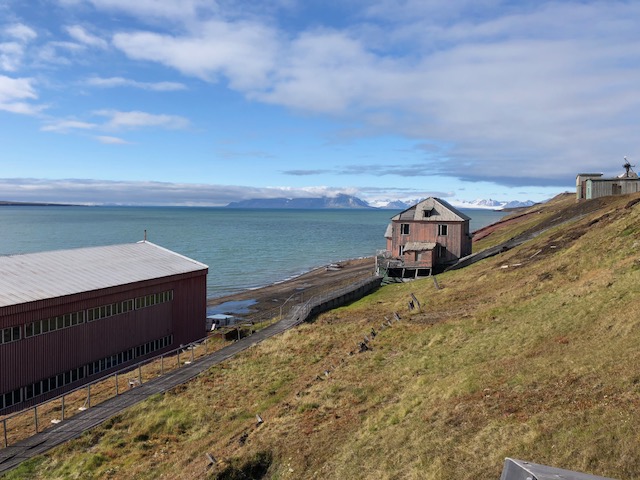
An Arctic Beach Day
The menu of activities on our second day was extensive. We set off on a morning exploration of a beach and a rocky cove with glaciers at the far end of the cove. We were surrounded by stunning vistas and still, arctic blue waters. The arctic blue is like no color I have seen. This was also the first time on the trip we saw floating glaciers of blue ice. It was also the first time we were taken by one of four motorboats stored on the main boat to the land. This involved lifejacket routines and careful instructions about following the guide and not drifting off to be eaten by a polar bear. Everyone definitely listened!
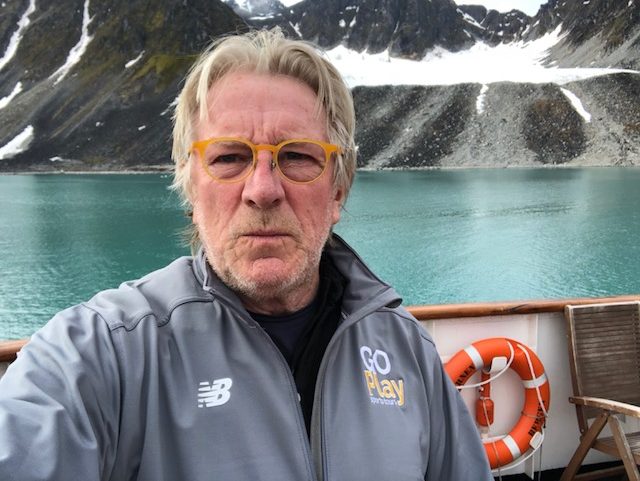
At least four people went for a swim in the below freezing water – one was even naked. We all wished them well and I wished I had my Speedo but alas! Apparently, you get a certificate at the end if you take the plunge. I didn’t feel tempted in the least! We were attacked by arctic terns! These birds commute between the arctic and Antarctic every summer and winter chasing the warmer weather and the midnight sun. About 40,000 kilometers roundtrip each year! A lot of flapping and not much time at home with the kids so no wonder they get bent out of shape if you get near their nests. They attack ferociously in swarms like the scene in the Hitchcock movie, The Birds. The biggest challenge of the day was getting the lifejacket on and then defending your head from the beaks of the birds. A Polar bear encounter would seem insignificant to these two obstacles!

The Morning Arctic Silence
People spoke of this – the quiet and absolute still in an arctic landscape. We had arrived in a beautiful bay. Nothing unusual here except for a colorful orange hut full of things from explorers that had been here before. A chess set, two bunks, and random kitchen stuff. It was called Lloyd’s 5-star Hotel! The glacier field in the distance was the one we had just seen from the boat. It was a vast body of water with layer upon layer of packed ice dropping into the sea. The guides had asked for us just to walk the beach; to be alone and be still. The beach and rocks were wide and crescent shaped. We each staked a place or point and just stood or sat and gazed into the arctic air. Nothing more. It was amazing and something I’ll remember.

Hiking the Beach
Today we were prepared to hike but a polar bear had been spotted and reported roaming the beach area and the guides had to ensure the area was clear and safe before we were able to go out. The climb to the far mountain would be around two hours round trip. It was exciting stuff. We were given very strict instructions to stay close and work as a team. Everyone was on the lookout. The guides were super alert with flares and rifles in hand.

The walk across spongy flora and jagged rocks was exhausting but the view was amazing from the top. We saw reindeer and no bears (which was good). I had constantly weighed the specifications of rifle range and guide to me. It never was off my mind. The climb down was trickier as is always the case. At last we headed back to the boat and to dinner.
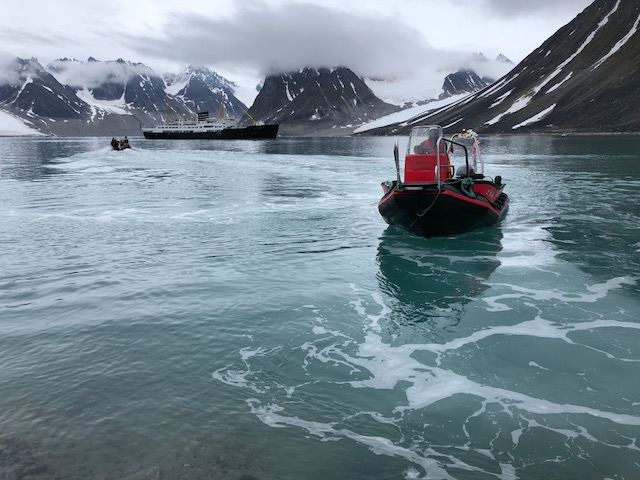
We would set sail for Ny-Ålesund for our last excursion of the trip. Here we would find the staging post for the explorers who came to conquer the north pole. The last piece of land before the ice fields gobbled up the wooden boats and took their human toll. The rain had picked up – chilly arctic rain.
A Sight to Remember
It’s what we all dreamed about. I honestly thought it would never happen. A polar bear sighting!
We were in the most beautiful arctic bay I had ever seen with huge glaciers and magical drifts of blue icebergs. We saw a glacier drop into the water right in front of us. The sound was haunting. That was when someone back on the main boat spotted a polar bear swimming across the fjord.

The captain of our boat slowly, and with great care, followed its route. It was heading between the glaciers to the far beach. What a sight. They are huge and are truly great swimmers. Once on land, it paraded up and down for quite a while. Everyone reached for their weapon of choice! The binocular purist crew were going crazy. The camera people with lenses about two feet long were in ecstasy. This was their moment. All that lugging around was worth it. The bigger, the better. Cameras, real cameras, won the day. These giant single reflex cameras with huge telescopic zooms just live for moments like this. My Lumix with a Leica Lens was decent enough but really didn’t cut the mustard. At least I had an option beyond my iPhone.

Now we had our stories. We could embellish and move them around, but we had seen a polar bear in the wild. Exaggeration would be important and vital in the retelling! On to the walrus island and the farthest north we would get to – 80 degrees latitude which was practically at the North Pole. We would celebrate the crossing of the latitude line with a glass of champagne. It was something to behold.

Ny-Ålesund

Ny-Ålesund is the northernmost settlement in the world (80 degrees latitude) with a permanent civilian population. Other settlements are farther north but are populated only by rotating groups of settlers. That’s where we found ourselves on the last night. The weather deteriorated, and the rain was heavy as we moored in this town. The view across the bay was spectacular. We had a museum to get to and a bar that stayed open only on Thursdays and only until 9:30 pm. The sign read “No Photos Please”! The boat comes in once a week. The museum was fascinating.

This was first a mining town. A coal mining town and later a research center for Geologists and meteorologists. The shop in the museum was busy and business was sort of booming – not booming crazy but this was the end of the world! And it was so absolutely bizarre. It was our last night in uncomfortable weather and the boat rocking like crazy. In my single bunk, I dreamed of the Titanic but woke in the morning to breakfast. Life was good.
The Brilliant Guides of Svalbard
Here’s the deal, it takes a lot of training to become an arctic guide. Your background has to have some modicum of outdoorsy enthusiasm preferably with a knowledge of the sea and geology. You have to speak several languages and English must be one of them. You have to know how to read the night skies, follow the pattern of the midnight sun, and spot and distinguish between whales. You must know a walrus from a seal from a far-off distance and you need to have your eyes trained constantly for polar bears. You also have to know how to shoot a gun under pressure, how to fire a flare, and how to deal with emergencies. Flare first, fire second. You have to know how to sail, how to judge changing conditions, how to pitch a tent in a blizzard, and how to run a trip line so that there are no surprises at night from the bears or reindeers. These are standard Arctic emergency training drills that need to be imagined real.

You’re off the map here; off the charts. There is zero cell phone coverage. You are responsible for 100+ people at any given time who haven’t the faintest idea of arctic conditions. You need to think about the safety of the people and keep a respect for the animals. Everyone wants to see the polar bears, but you have to be the one that watches for them constantly.

In addition, you have to have a super personality, exude leadership, and be a decision maker. It may be that your decision can make a huge difference to a day. Lastly, you have to really love it. Love the outdoors, even in blizzards, freezing temperatures, and fast changing conditions that can alter any day. You have to keep to the code and stay smart, always working as a team and having a team mentality. Oh yeah. The last thing you have to know is how to swim in arctic water. There is a standard three-minute test you have to endure. Pass that and maybe you get a job! Ah ha!
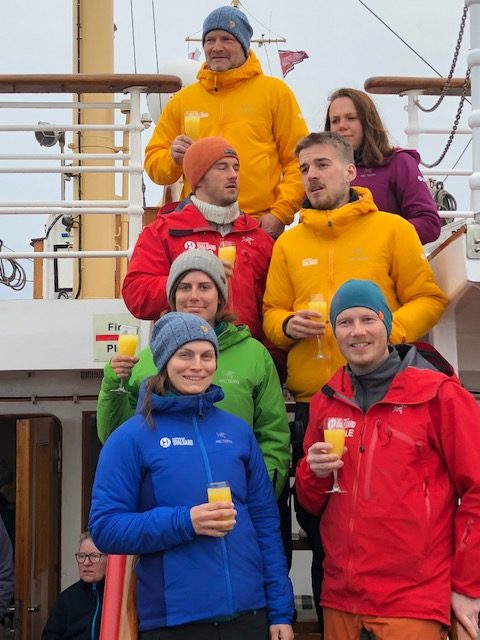
Looking Back
So, hours of endless days. A cruise to 80 degrees latitude and the end of the world in the northern hemisphere. A World Cup final in a pub in Longyearbyen with about 50 French people and 20 Croatians. Allez les bleus! An encounter with a polar bear, a husky sled ride, a Russian enclave inside a Norwegian archipelago, and a group of people that were fun and different and just like me, experimenting with something that seemed slightly off center. It was amazing. Like no other place on Earth. Can we take groups there? You bet.
